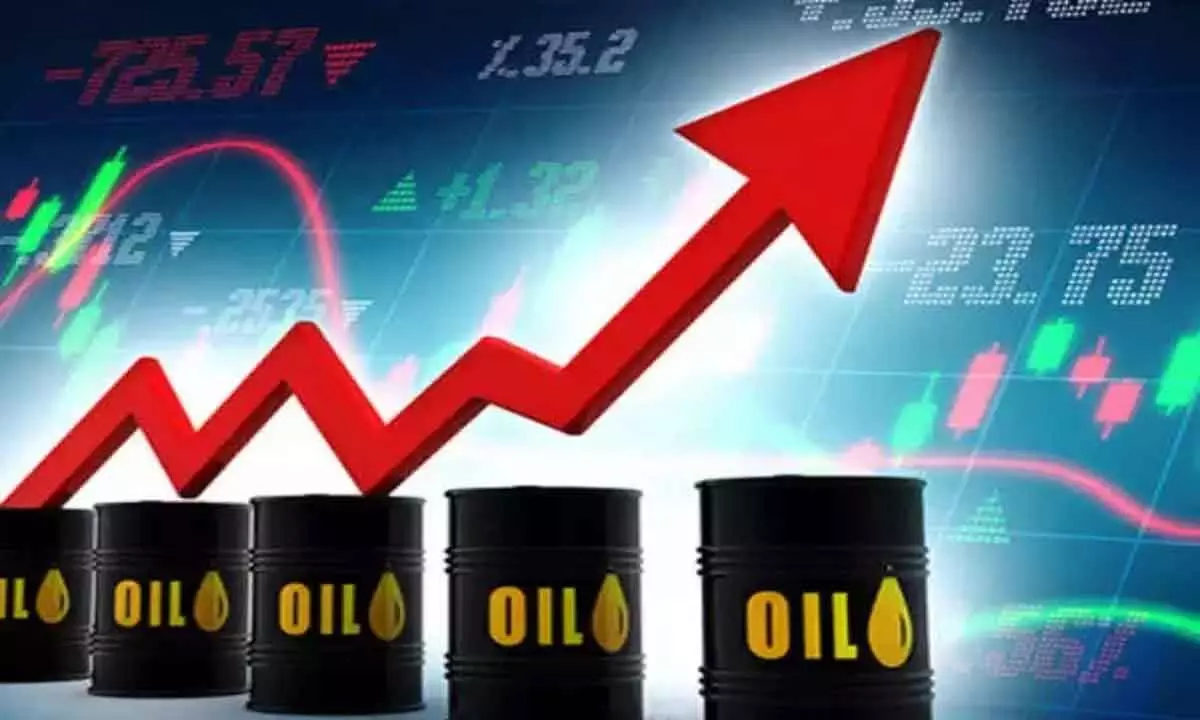The continuous rise of oil prices will have cascading effect
image for illustrative purpose

The average annual crude oil prices in 2024 and 2025 are forecast to remain near their 2023 average because global supply and demand for petroleum liquids will be relatively balanced over the next two years. Conflicts in the Middle East will have a major impact on global economics given the region's significance in energy supply and shipping. The global economy is still recovering from inflation driven by Russia's invasion of Ukraine. A war in an energy-rich region will further exacerbate inflation and have cascading effects, including in the US.
The Iran-Israel War has low probability on this front but, nonetheless, it has catastrophic economic implications. There is a potential for skyrocketing of oil prices, possibly reaching $150 a barrel. Global growth could plummet to 1.7%, marking the worst since 1982, and inflation could rise to 6.7%. The most likely outcome leans towards a contained conflict. However, the current events have shattered hopes of a stabilized Middle East. The geopolitical tensions continue to influence global economic and market outcomes, especially in a region as volatile as the Middle East. Brent crude prices have risen from around $83 per barrel a month ago to above $90 last week.
Nevertheless, for oil prices to have a significant impact on monetary policy, they would need to see larger and more sustained increases. Specifically, this may require higher energy prices to feed into core inflation, such as producers passing on higher energy costs to consumers. With the Iran-Israel conflict, a major oil supply risk, there could be more strictly enforced oil sanctions and Israel’s response could include targeting Iran’s energy infrastructure. The Strait of Hormuz is the world’s busiest energy channel and any closure of the same may lead to a surge in the prices of both oil and natural gas/LNG.
Any surge in the prices of crude oil and natural gas would be detrimental to India which relies on imports to the extent of 88 per cent of its crude oil consumption and 45 per cent of its natural gas consumption. About 20 million barrels per day of crude oil and condensate equivalent to about a fifth of the global consumption pass through the Strait of Hormuz of which around 70 per cent comes to Asia.
Oil prices have been fluctuating for the last two years due to the ongoing Russia-Ukraine and the Israel-Hamas wars. After Russia invaded Ukraine in 2022, oil prices jumped to $120 per barrel amid supply concerns as western nations imposed sanctions on Russia, one of the world’s major oil exporters. High fuel and energy prices have been a major driver behind the higher cost of living worldwide in the past couple of years.
Israel’s reaction to the attack would be the key for global markets in the coming days. Iran is home to vast oil resources and is the third-largest producer in OPEC. Any disruption in its capacity to supply global markets could soar oil prices, opine many analysts. Markets will also closely monitor the developments or closure of the Strait of Hormuz, a key chokepoint which sits between Iran and Oman and through which one-fifth of global oil production flows daily.

